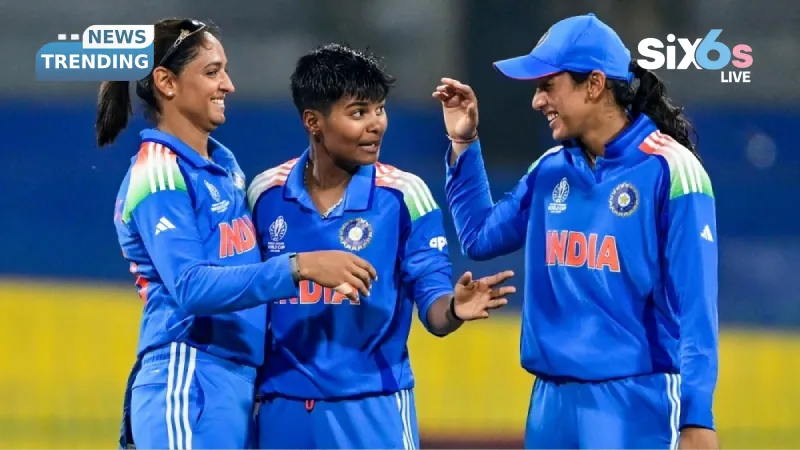Have you ever wondered how a bowler who had played only nine one-day internationals could make the chasing side a mere spectator in an ODI match? Kranti Gaud did not just bowl; she bowled, and to all intents and purposes, it was also tactical bowling she mastered in reducing Pakistan to a weakening situation from where they could only watch with impotent solicitude. The result was that India won comfortably by a margin of 88 runs. Was it simple talent and supreme confidence that gave Kranti Gaud the edge that made her so destructive?
Rising Star Meets High Stakes
In Colombo’s R Premadasa Stadium, Pakistan were in pursuit of 248 — a total that requires equal parts intent and caution. After winning the toss, India opted for early use of their pace battery, which would bring them early momentum. Gaud, just five months after her debut at this same ground, was entrusted with long spells, a sign of the faith captain Harmanpreet Kaur placed in her. The result was that Pakistan were 30/3 at the end of some 15 overs; Gaud bore a swing, near to double what she had at Guwahati and got as many as 47 dot balls out of 60 — this being the most by an Indian seam bowler in an ODI from 2020.
Swing, Skill, and Surgical Precision
Genius Tactics: The younger Gaud demonstrated mastery over the line, length, and the swing of the ball. Her subtle variations in the pace and trust in her own ability forced Aliya Riaz and Sadaf Shamas into false strokes early. Able to mix full-length deliveries with back-of-length balls, she kept the batters guessing. She bowled seven overs up front, a job usually left to the more experienced cricketer, and kept an immaculate line.
Mental edge: Confidence was pervasive. The instinctive move to have double slips was due to Gaud’s concept of the psyche of the batsmen. The well-known mid-on celebration, after Aliya Riaz’s dismissal, was not for the media, but it indicated authority. The early wickets had instilled some fear in the Pakistani players, forcing batsmen such as Sidra Amin to play defensively, although their game is an aggressive one.
Data Speaks: Economically, Gaud’s first 16 balls in PP brought only three runs, an economy rate of 1.12 with two wickets. Over 10 overs, she had conceded 37 runs for three wickets, which produced 22 false shots, the most made by an Indian fast bowler since 2012, together with one other bowler. Only one shot among her 60 was well hit, which exhibits a dominance that excluded luck.
Debut Ground, Proven Temperament
Few bowlers have shown this kind of control so early in their careers. Think Jhulan Goswami and her breakthrough spells in 2002, or Ellyse Perry in 2011. Gaud’s display in Colombo emulated that kind of performance dominance under duress. Her success also shows a modern evolution of women’s cricket, a mixture of pre-plan, real-time instinct, and captaincy trust. Unlike many young bowlers who rely on speed or swing, Gaud mixed mental toughness and precise execution, the rarest collection of skills for a 22-year-old with only nine matches of experience.
Kranti Gaud’s outstanding performance against Pakistan was not just an achievement for India; it was a powerful declaration. In times when batting depth frequently outshines the influence of bowlers, she proved to the cricketing community that a young fast bowler with confidence, thorough preparation, and smart strategies can control the outcome of a game. For Pakistan, this serves as a crucial reminder: being hesitant in front of skillful seamers can lead to dire consequences. Meanwhile, India’s lesson is equally significant, supporting instinctive talent can bring quick rewards. Gaud has clearly established herself as a formidable player who will be respected throughout the 2025 Women’s World Cup.
Stay updated on the latest cricket news and exciting updates at Six6slive. Dive into our in-depth articles and analyses to connect with the action today!
